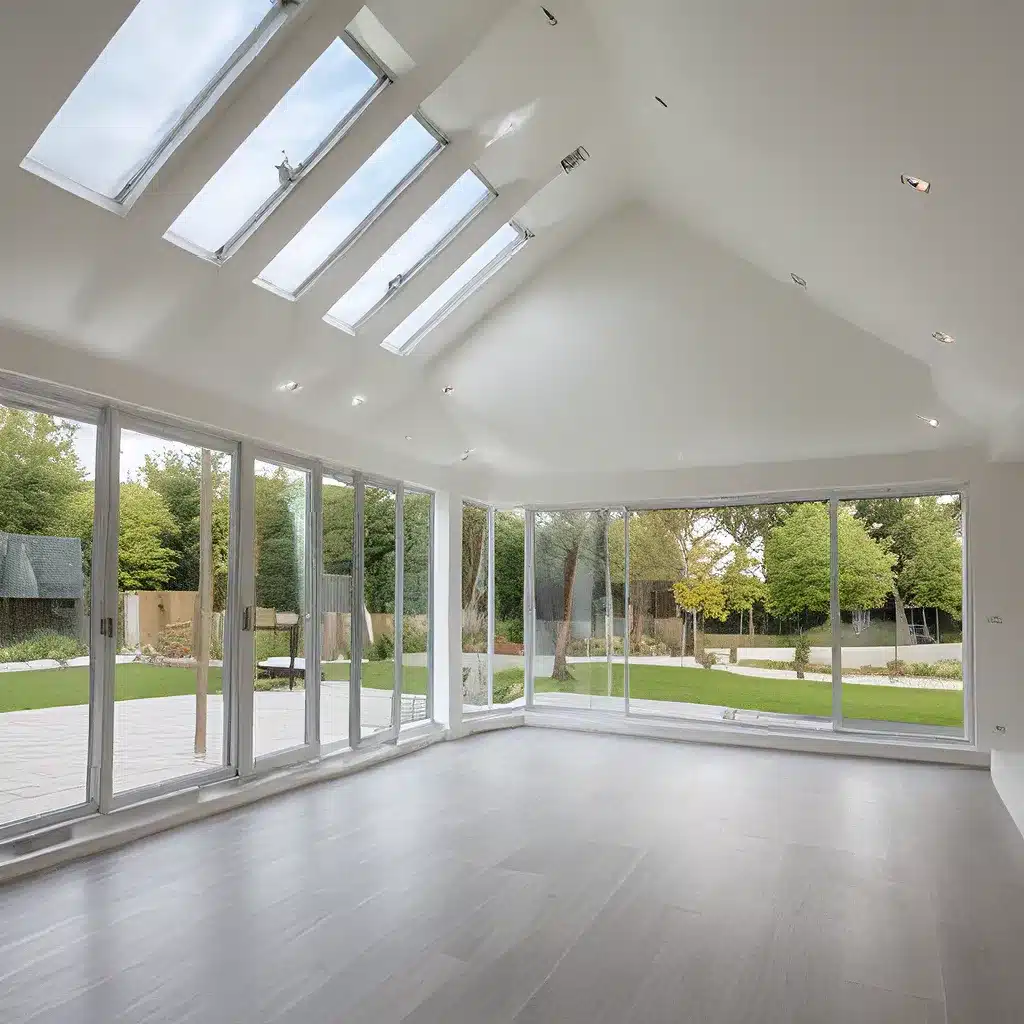
Unlocking the Secrets to a Cozy, Cost-Effective Addition
As I embark on planning my home extension project, one of the top priorities on my mind is ensuring energy efficiency. After all, who wants to invest in an addition only to watch their utility bills skyrocket? Not me, that’s for sure.
But where do I even begin? The thought of navigating all the technical details around insulation, ventilation, and heating systems is enough to make my head spin. Luckily, I’ve done some digging and uncovered a treasure trove of insights that I’m excited to share.
Understanding the Basics of Heat Transfer
Let’s start with the fundamentals – the science behind how heat moves in and out of our homes. It all comes down to three key mechanisms: conduction, convection, and radiation.
Conduction is the transfer of heat through direct contact, like when a hot pan warms the surface it’s resting on. In the context of our home extension, conduction happens through the walls, floors, and other structural elements.
Convection, on the other hand, is the movement of heat via air or liquid flow. This is why proper ventilation is so crucial – it helps regulate airflow and prevent unwanted heat gain or loss.
And then there’s radiation, which is the transfer of heat through electromagnetic waves, like the warmth you feel from the sun. Surprisingly, this can be a major factor in our home extensions, especially if we have a lot of windows or metal siding.
Sealing the Envelope
One of the most critical steps in achieving energy efficiency is creating a tight, well-insulated “envelope” for your home extension. This means minimizing any cracks, gaps, or openings that could allow precious heated or cooled air to escape.
I learned that a common problem in older homes and additions is insulation that has shifted or become compromised over time. Regular inspections and maintenance can help catch these issues before they become major energy drains.
Another key consideration is the type and placement of insulation. Rigid foam insulation can be a great option for walls and roofs, as it provides superior thermal resistance. And don’t forget about perimeter insulation – that extra layer around the foundation can make a surprising difference.
Harnessing the Power of the Sun
One of the more intriguing aspects of energy-efficient home design is the strategic use of solar radiation. By carefully positioning windows, skylights, and even solar panels, we can harness the sun’s power to our advantage.
During the cold winter months, we want to maximize the amount of sunlight that enters the home, helping to naturally warm the space. But in the sweltering summer, we need to find ways to block that radiant heat and keep things cool.
Enter the concept of sol-air temperature – a metric that takes into account the combined effects of ambient air temperature and solar radiation. It’s a handy tool for calculating the true thermal load on our home extension and designing the appropriate insulation and ventilation systems.
Upgrading Heating and Cooling Systems
Of course, no discussion of energy efficiency would be complete without addressing the HVAC system. After all, heating and cooling can account for a massive chunk of our home’s energy use.
One area that’s often overlooked is the efficiency of our radiant heaters. Believe it or not, a lot of the heat generated by these systems never actually reaches the floor where the chicks – I mean, people – need it most. By understanding the optimal placement and performance metrics, we can ensure that the warmth is going exactly where it should.
And let’s not forget about lighting. Upgrading to energy-efficient bulbs and strategically placing skylights can make a significant difference in our overall energy consumption.
Embracing an Iterative Approach
As I dive deeper into this topic, one thing has become abundantly clear: there’s no one-size-fits-all solution when it comes to optimizing energy efficiency in a home extension. It’s an ongoing process of tweaking, testing, and continuously making improvements.
The experts I’ve consulted emphasize the importance of an iterative approach, where we constantly monitor our home’s performance and make adjustments as needed. This might mean regularly inspecting the insulation, tuning up the HVAC system, or experimenting with different lighting configurations.
And let’s not forget the valuable role that technology can play. Smart thermostats, energy monitoring systems, and even AI-powered optimization algorithms can help us stay on top of our home’s energy use and identify opportunities for improvement.
The Payoff: Comfort, Savings, and Sustainability
As I reflect on all the insights I’ve gathered, I can’t help but feel excited about the potential for my home extension project. By focusing on energy efficiency, I’m not only saving money on my utility bills, but I’m also enhancing the comfort and livability of my home.
And the benefits extend far beyond my own personal experience. By reducing my carbon footprint, I’m doing my part to contribute to a more sustainable future. It’s a win-win-win scenario that I simply can’t ignore.
So, as I embark on this journey of crafting the perfect home extension, energy efficiency will be at the forefront of my mind. With the right strategies, a bit of elbow grease, and a dash of creative thinking, I’m confident that I can create a cozy, cost-effective addition that will be the envy of the neighborhood.
Who knows, maybe I’ll even become the local energy efficiency guru, doling out advice to all my friends and neighbors. After all, the more we can spread the word about the power of optimized home design, the better off we’ll all be.
In the meantime, I’ll be busy crunching the numbers, hunting for the best insulation deals, and dreaming up innovative ways to harness the sun’s energy. Bring on the home extension – I’m ready to take on the challenge!

















